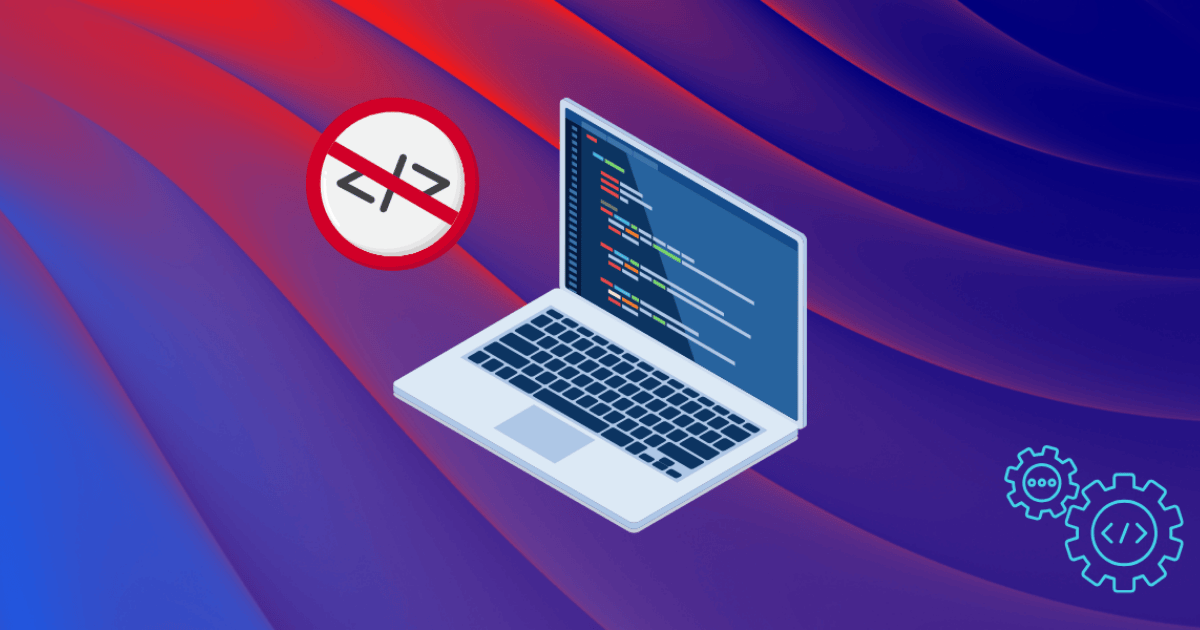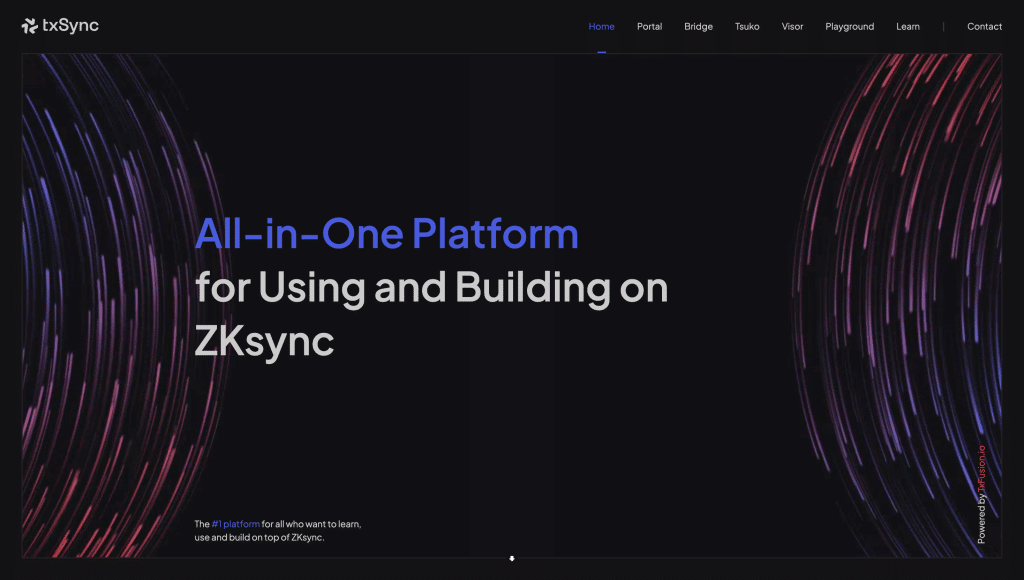How No-Code Platforms Are Revolutionizing Developer Experience


What if you could build complex software without writing a single line of code? It sounds like fiction, but it’s now a reality. No-code platforms have transformed software development, allowing non-technical users to create solutions without coding expertise. This shift is helping businesses innovate faster and more efficiently.
In this article, we’ll explore these platforms, their impact on developer efficiency, and the features of the txSync no-code platform.
Buckle up and get ready to discover a world where anyone can build anything!
What Are No-Code Platforms?
No-code platforms are software development environments that allow users to create applications through graphical user interfaces and configuration instead of traditional computer programming. These platforms use visual development environments with simple logic and drag-and-drop features, enabling users to design and build fully functional applications without writing code.
The demand for no-code platforms has skyrocketed in recent years, driven by several factors:
- Shortage of skilled developers
- Increasing need for digital transformation across industries
- The desire for rapid prototyping and iteration
- Empowerment of citizen developers within organizations
According to a Forrester report, the no-code development platform market is expected to grow from $3.8 billion in 2017 to $50 billion by 2024, representing a compound annual growth rate (CAGR) of 41%.
The Benefits of No-Code Platforms
No-code platforms offer numerous benefits, including:
- Increased Efficiency: They enable non-technical users to create solutions quickly and efficiently, reducing the time and effort required to develop and deploy applications.
- Improved Collaboration: They facilitate collaboration between technical and non-technical teams, enabling them to work together to create solutions that meet business needs.
- Cost Savings: They reduce the need for extensive coding knowledge, resulting in cost savings on developer resources and training.
- Faster Innovation: They enable businesses to innovate faster, responding to changing market conditions and customer needs.
How No-Code Platforms Enhance Business Efficiency
Rapid Application Development
No-code platforms significantly accelerate application development. While traditional coding can take weeks or months, these solutions allow users to build functional applications in just days or hours.
Reduced Development Costs
No-code platforms not only cut development costs by reducing the need for specialized coding expertise, but they also create job opportunities for those with general digital skills. By empowering existing staff and digitally savvy individuals to build applications, these platforms minimize reliance on costly development resources, making it possible for a wider range of people to contribute to development.
Increased Productivity
They allow developers to focus on high-level problem-solving and innovation rather than getting bogged down in syntax and low-level coding tasks. This shift in focus leads to increased productivity and more efficient use of developer time.

Easier Maintenance and Updates
They simplify application maintenance and updates. Their visual interfaces allow users to easily grasp the app structure and make changes without delving into complex code, saving time and reducing errors.
Bridging the Gap Between Business and IT
These platforms facilitate better collaboration between business users and IT departments. Business users can directly contribute to application development, ensuring that the final product aligns closely with business needs and requirements.
No-Code Platforms Across Various Sectors
Below are examples of how different sectors are leveraging no-code platforms to enhance their workflows and meet specific business needs:
E-commerce
E-commerce platforms like Shopify and Webflow enable rapid online store creation without coding skills. With built-in payment processing, inventory tracking, and responsive designs, businesses can quickly launch web shops. APIs allow further customization, making these tools suitable for various business sizes.
Healthcare
Healthcare leverages platforms like QuickBase and Bubble to build patient management systems and telemedicine portals. These tools allow hospitals to streamline data management and compliance without in-house developers, enabling quicker adoption of innovations such as wearable device integration and secure patient portals.
Education
Educational institutions utilize these platforms to create Learning Management Systems (LMS) and student portals. Platforms like Adalo, OutSystems, and AppSheet enable educators to develop apps for student data management, automated grading, and class scheduling to create customized learning experiences and enhance educational accessibility without relying on external developers.
Finance and Banking
Financial institutions use no-code platforms like Betty Blocks and Unqork to create secure, compliant apps for managing customer data, automating workflows, and processing transactions.
Real Estate
Real estate companies use platforms like Bubble, Airtable, and Glide to create property listing platforms, customer relationship management (CRM) systems, and virtual tour booking apps. The flexibility of these tools allows real estate firms to adapt quickly to market demands.

Logistics and Supply Chain
Logistics companies rely on platforms like Knack and Zoho Creator to develop custom inventory tracking, warehouse management, and shipment monitoring systems. This is especially valuable for smaller companies that need agile, scalable solutions without significant development overhead.
Marketing and Advertising
Marketing agencies leverage no-code platforms like Webflow and Wix to build campaign landing pages and automate marketing workflows. These tools enable marketers to create websites, manage content, and integrate analytics without coding to facilitate rapid prototyping and A/B testing, allowing for data-driven campaign optimization.
Nonprofits
Nonprofits use platforms such as Glide and Airtable to manage donors, fundraise, and coordinate volunteers. These platforms enable the easy creation of apps and dashboards for tracking donations, managing events, and coordinating volunteers, allowing nonprofits to focus on their mission.
Human Resources
HR departments use platforms like Airtable and Zoho Creator to streamline employee management. These tools enable HR teams to automate routine tasks and generate insightful reports, enhancing HR efficiency without relying on IT support.
Media and Entertainment
Media companies leverage platforms like WordPress and Webflow to create websites and manage content efficiently. These tools enable content creators to easily build membership sites and monetize their work, streamline project management and team collaboration, boosting overall operational efficiency.
Government and Public Sector
No-code platforms enable government agencies to create citizen portals, streamline form processing, and enhance public data management. Using tools like AppSheet and Mendix, they develop apps for service requests and case management.
No-Code Solutions in Blockchain Technology
A really big deal in the world of blockchain space is Zero-Knowledge (ZK) technology, that is backed by math. One of the leading solutions that is using this technology is ZKsync, a Layer-2 protocol that scales Ethereum. ZKsync enables faster, cheaper transactions than Ethereum’s main network, without compromising decentralization and security.
What’s driving ZKsync’s adoption even further is txSync, a no-code platform making it easier for businesses and developers to integrate ZKsync technology seamlessly.
Introducing txSync
txSync is a modular platform designed to make ZKsync integration and blockchain management easier for developers and businesses. By offering a suite of user-friendly tools, txSync streamlines complex blockchain operations, ensuring a smoother experience for both technical and non-technical users within the ZKsync ecosystem.

Some of txSync core offerings include:
txSync Portal
A suite of tools for managing digital assets across the ZKsync Era network. Portal allows users to easily connect, view, and take control of their assets within ZKsync through a user-friendly interface.
txSync Bridge
A powerful tool that facilitates fast, secure, and cost-efficient fund transfers between Ethereum and ZKsync networks. By leveraging zkEVM, Bridge enables faster and cheaper transactions while maintaining Ethereum’s security.
Tsuko, the paymaster
A user-friendly tool for creating, customizing, and managing paymasters—smart contracts that handle transaction fees on behalf of users. One of the key benefits of Tsuko is the ability for users to quickly set up paymasters in just a few clicks without the need for time-consuming manual coding.
Visor
Visor is an automation tool for blockchain transactions on ZKsync. It allows users to handle tasks such as paying dividends, managing expenses, or scheduling contract interactions—all while ensuring full control over funds.
How txSync drives blockchain adoption forward
With its no-code solutions, txSync has significantly lowered the barrier to entry into the world of blockchain and ZK technology and accelerates the adoption of ZKsync. It has provided:
- Simplified Asset Management through Portal, as users can easily manage their digital assets on ZKsync without deep technical knowledge.
- Efficient Cross-Network Transactions, thanks to Bridge, make it simple for users to move funds between Ethereum and ZKsync, encouraging broader use of the ZKsync network.
- Accessible Smart Contract Functionality with Tsuko, as it allows even non-developers to create and manage paymasters, a key feature for many blockchain applications.
- Automated Blockchain Operations with Visor , which enables businesses to automate complex blockchain tasks, making ZKsync more practical for everyday use cases.
It is clear that txSync stands out as a prime example of how no-code and low-code platforms are not just a trend but a critical tool for accelerating the adoption of blockchain. As this market grows, we can expect to see more innovative no-code solutions being created across various sectors.



